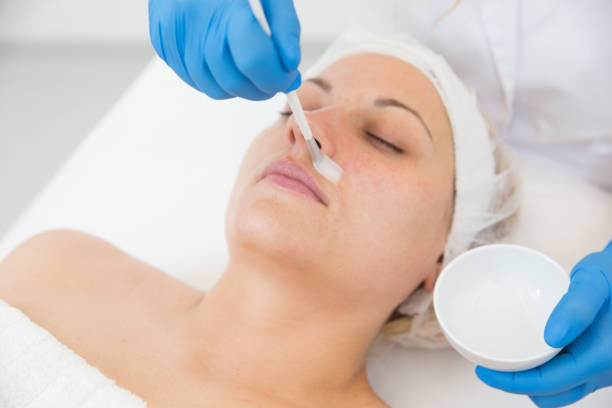Bladder Botox, also known as onabotulinumtoxinA, has emerged as a therapeutic option for individuals experiencing overactive bladder (OAB) symptoms. This minimally invasive Procedure involves injecting Botox into the bladder muscle, providing relief from symptoms such as urinary urgency, frequency, and incontinence. In this article, we delve into the uses, Procedures, and considerations associated with Bladder Botox.
Understanding Bladder Botox
1.1 What is Bladder Botox?
Bladder Botox involves injecting botulinum toxin into the bladder muscle to relax and calm overactive bladder symptoms. Botulinum toxin, commonly known as Botox, temporarily paralyzes or weakens muscles, providing relief from spasms and involuntary contractions.
1.2 Conditions Treated
Bladder Botox is primarily used to manage symptoms of overactive bladder, including frequent and urgent urination, as well as urinary incontinence. It is considered when other treatments, such as medications, have not provided sufficient relief.
The Bladder Botox Procedure
2.1 Preparing for the Procedure
Before the Bladder Botox procedure, a healthcare professional will conduct a thorough evaluation of the patient’s medical history and symptoms and perform any necessary tests. The patient may be advised to discontinue certain medications that could interfere with the temporary procedure temporarily.
2.2 Administration of Bladder Botox
During the Procedure, Botox is injected directly into the bladder muscle through a cystoscope—a thin tube with a camera inserted into the urethra. The cystoscope allows the healthcare provider to visualize the interior of the bladder and accurately administer the injections.
2.3 Anesthesia
Local anesthesia or sedation is often used to minimize discomfort during the Procedure. The injections themselves are relatively quick, typically taking around 15 to 20 minutes to complete.
2.4 Post-Procedure Monitoring
After the injections, patients may be monitored for a short period to ensure there are no immediate complications. Most individuals can return home the same day, but it’s essential to have someone available for transportation, as driving may be restricted.
Recovery and Results
3.1 Post-Procedure Discomfort
Patients may experience mild discomfort, such as temporary bladder irritation, urgency, or mild bleeding during urination in the days following the Procedure. These symptoms usually resolve on their own.
3.2 Timeframe for Results
The effects of Bladder Botox are not immediate. It may take a few days to a week for individuals to notice a reduction in overactive bladder symptoms. The duration of symptom relief varies among individuals.
3.3 Duration of Effectiveness
The beneficial effects of Bladder Botox are temporary, typically lasting around six to nine months. Periodic re-administration of Botox injections may be recommended to maintain symptom relief.
Considerations and Potential Risks
4.1 Potential Side Effects
While Bladder Botox is generally safe, potential side effects include urinary tract infections, difficulty emptying the bladder, and temporary urinary retention. Individuals must report any unusual symptoms to their healthcare provider promptly.
4.2 Contraindications
Bladder Botox may not be suitable for individuals with certain medical conditions or those taking specific medications. A comprehensive discussion with a healthcare provider will help determine the appropriateness of the Procedure for each individual.
4.3 Alternative Treatments
Before opting for Bladder Botox, individuals may explore alternative treatments for overactive bladder, including medications, behavioral therapies, and lifestyle modifications. A healthcare provider can guide individuals in choosing the most suitable approach.
Conclusion
In conclusion, Bladder Botox offers a valuable therapeutic option for individuals struggling with overactive bladder symptoms. While the Procedure is generally safe and well-tolerated, it’s essential for individuals to thoroughly discuss their medical history and potential risks with a healthcare provider. With proper consideration and monitoring, Bladder Botox can provide significant relief and improve the quality of life for those affected by overactive bladder.
5.1 Is Bladder Botox Painful?
While there may be mild discomfort during and after the Procedure, local anesthesia or sedation is typically used to minimize pain. Most individuals find the discomfort manageable, and any side effects usually resolve within a short period.
5.2 How Long Does the Bladder Botox Procedure Take?
The Bladder Botox procedure itself usually takes around 15 to 20 minutes. However, additional time may be required for preparation, anesthesia administration, and post-procedure monitoring.
5.3 Can I Resume Normal Activities After Bladder Botox?
Most individuals can resume normal activities shortly after the Bladder Botox procedure. However, healthcare providers may advise avoiding strenuous physical activity or certain medications for a specified period. It’s crucial to follow post-procedure guidelines provided by the healthcare team.
5.4 Are There Long-Term Risks Associated with Bladder Botox?
Long-term risks associated with Bladder Botox are minimal. However, periodic re-administration of Botox injections may be necessary to maintain symptom relief. Individuals should stay in regular communication with their healthcare provider to address any concerns or changes in their health status.
5.5 Can Bladder Botox Completely Cure Overactive Bladder?
Bladder Botox does not offer a permanent cure for overactive bladder. It provides temporary relief from symptoms, and the effects typically last for six to nine months. Regular follow-ups with a healthcare provider are essential to determine the appropriate timing for repeat injections based on individual needs.

